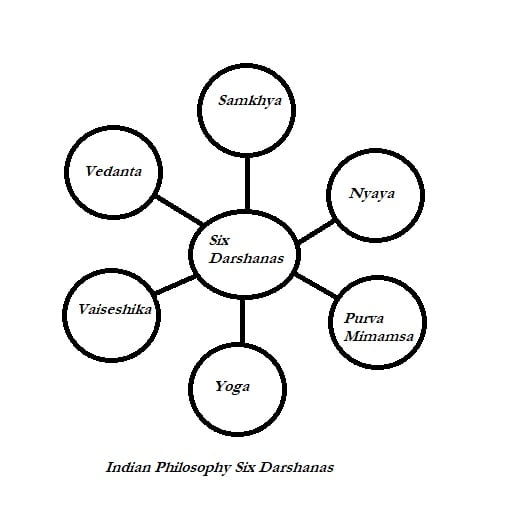Indian philosophy is rich in tradition and history, dating back to ancient civilization. A significant aspect of Indian philosophy is the Six Darshanas, which emerged as a way to understand the world and its complexities. The term Darshanas in Sanskrit means “visions” or “perceptions,” which involves a set of theories and practices for self-realization and liberation. In this article, we will explore the Six Darshanas of Indian Philosophy and understand the key principles of each of them.
Exploring the Six Darshanas of Indian Philosophy
The Six Darshanas are classified into two groups: Astika and Nastika. Astika Darshanas believe in the existence of God, soul, and the Vedas, while Nastika does not believe in these things. The six Darshanas are Nyaya, Vaisheshika, Yoga, Samkhya, Mimamsa, and Vedanta.
Nyaya Darshana, founded by Gautama, is the science of logic and reasoning. The fundamental principle of Nyaya is the attainment of valid knowledge through a logical inference process. The main focus of Nyaya is to establish the nature of knowledge, the methods of acquiring it, and the criteria for determining its validity.
Vaisheshika Darshana was founded by Kanada and is concerned with the study of nature and physical world. The main principle of Vaisheshika is that everything in the universe is composed of atoms, and it is through the combination of these atoms that objects are formed.
Yoga Darshana is based on the teachings of Patanjali and focuses on attaining self-realization and liberation through the practice of yoga. The main principle of Yoga is the union of the individual self with the universal self, which is achieved through the practice of meditation, physical postures, and other techniques.
Samkhya Darshana, founded by Kapila, is based on the idea that the universe is composed of two fundamental elements, purusha, and prakriti. Purusha represents the conscious self, while prakriti represents the material world. The main focus of Samkhya is to attain liberation by separating purusha from prakriti.
Mimamsa Darshana, founded by Jaimini, is concerned with the interpretation of the Vedas and other sacred texts. The main principle of Mimamsa is the performance of rituals and duties prescribed by the Vedas, which lead to the attainment of liberation.
Vedanta Darshana, founded by Vyasa, is concerned with the study of the Upanishads and the nature of the ultimate reality. The main principle of Vedanta is the realization of the true nature of the self and the universe, which is achieved through the practice of meditation, self-inquiry, and other techniques.
Understanding the Key Principles of Each Darshana
To understand the key principles of each Darshana, it is crucial to understand their unique perspectives on the nature of reality and the methods they use to attain liberation. Nyaya and Vaisheshika focus on the study of the physical world and the attainment of knowledge through logical inference. Yoga and Samkhya focus on the attainment of liberation through the practice of yoga and the separation of purusha from prakriti. Mimamsa focuses on the interpretation of the Vedas and the performance of rituals for the attainment of liberation. Vedanta is concerned with the study of the Upanishads and the realization of the true nature of the self and the universe.
Nyaya’s key principle is the attainment of valid knowledge through logical inference. Vaisheshika’s main principle is that everything in the universe is composed of atoms. Yoga’s main principle is the union of the individual self with the universal self, which is achieved through the practice of meditation, physical postures, and other techniques. Samkhya’s main principle is the separation of purusha from prakriti for the attainment of liberation. Mimamsa’s main principle is the performance of rituals and duties prescribed by the Vedas, which lead to the attainment of liberation. Vedanta’s main principle is the realization of the true nature of the self and the universe through the study of the Upanishads and the practice of meditation and self-inquiry.
In conclusion, the Six Darshanas of Indian Philosophy provide unique insights into the nature of reality and the methods for attaining self-realization and liberation. Each Darshana has its unique principles and practices, which can aid an individual in their spiritual growth and understanding of the universe. By exploring the Six Darshanas, we can gain a deeper understanding of the complex and rich philosophical traditions of India.
Indian philosophy, with its ancient roots and diverse perspectives, continues to influence modern-day thought and spirituality. The Six Darshanas provide a unique perspective on the nature of reality and the methods for attaining liberation. By understanding the key principles of each Darshana, we can gain valuable insights into the world and our place in it.
